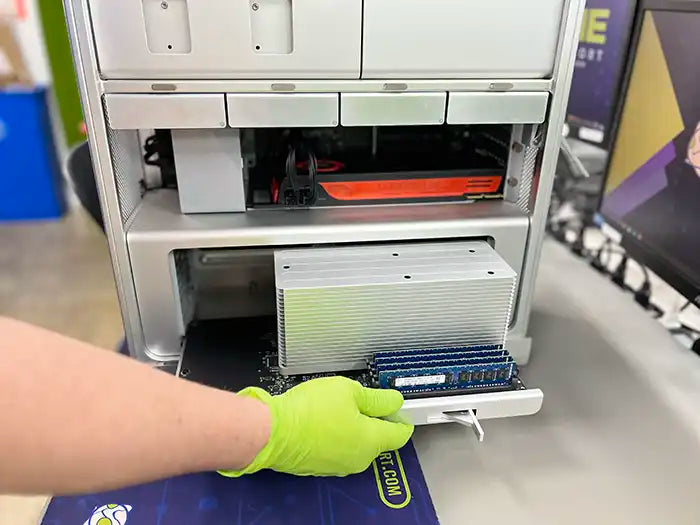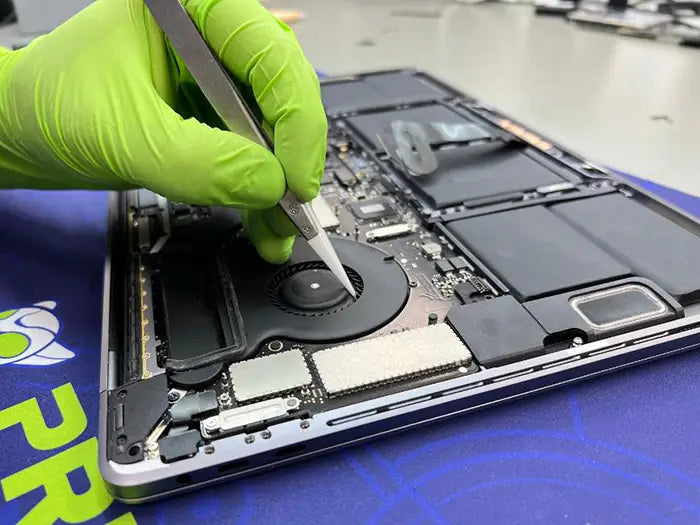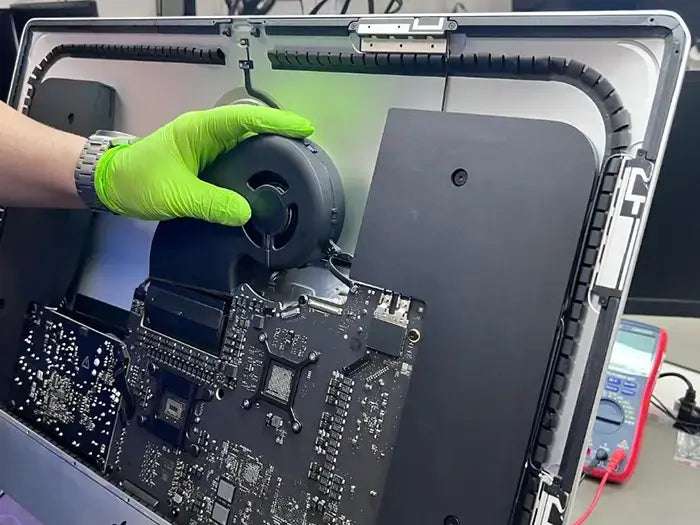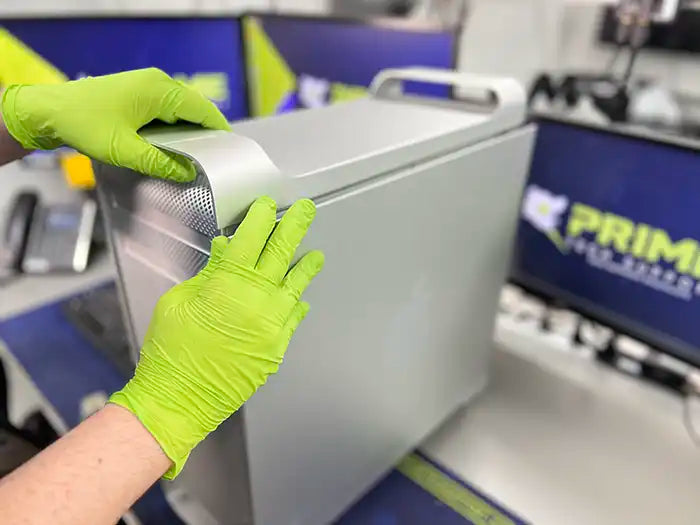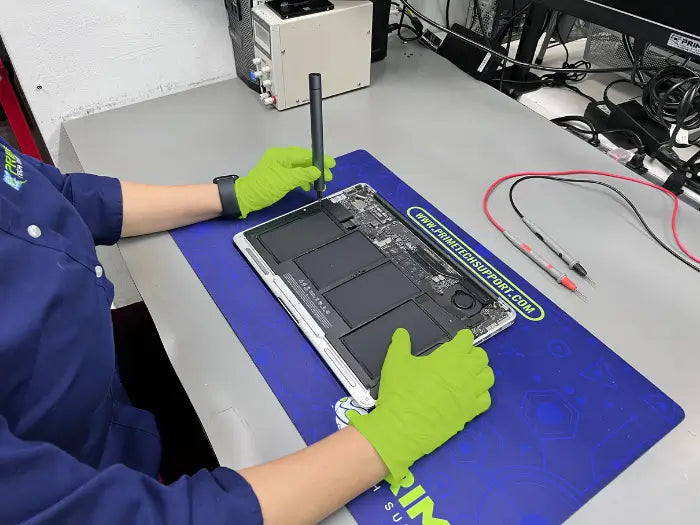M1 vs M2 MacBook pro: Should You Upgrade?
Who Is This Article For?
Beginners: This article offers basic tech guidance in simple terms for those new to computer technology.
Table of Contents
The Evolution of Apple Silicon
M1 and M2 in the Apple Ecosystem
In the computing world, Apple has made a big change. They moved from Intel processors to their own ARM-based chips. This was a huge step. In 2020, they introduced the M1 chip. It was much better than the old Intel chips in speed and energy use.
Now, we have the M2 chip. People are wondering if they should upgrade from M1 to M2. This article will compare the two. We'll look at their speed, graphics, energy use, and value for different users.
The M1 chip was a big improvement. It combined a CPU, GPU, and Neural Engine. This was great for people moving from older Intel Macs. The M2 chip promises to be even better. It's especially appealing for heavy users and professionals.
We're here to help. We'll compare the M1 and M2 for those thinking of upgrading or buying a new Apple product. We'll look at what each chip can do. This will help you decide if upgrading to M2 is good for you, or if the M1 is still a strong choice in Apple's fast-changing world.
The Evolution of Apple Silicon
Apple's transition to its custom-designed ARM-based chips began with the M1, a significant leap in computing. As the M2 emerges, users are weighing the value of upgrading. This comparison focuses on their performance to inform that decision.
In the 2020s Apple event, the focus was on the first Mac with Apple Silicon, particularly exciting for those deeply invested in the Apple ecosystem.
The transition from Intel to Apple's own silicon was of particular interest for predominant Mac user and Final Cut Pro editors. Due to the limitations faced with Intel chips in previous Mac models. The question on everyone's mind was: How will Apple Silicon, specifically the M1 chip, transform the performance of Macs?
Leading up to the event, there was speculation about whether Apple would prioritize efficiency or performance with their new chips.
The unveiling of the M1 chip answered this: Apple aimed for both. The M1 chip is a 5-nanometer chip with eight cores (four high-performance cores and four high-efficiency cores), alongside an integrated GPU, a 16-core neural engine, and built-in RAM.
This integration suggests significant gains in either efficiency or performance due to the tight integration of components.
A notable downside is the non-user-upgradeable RAM, integrated into the M1 chip. However, the upside is evident in the form of a single, efficient chip replacing separate CPU, GPU, and RAM, potentially creating significant gains.
Apple's claims about the M1 chip's performance were bold, suggesting significant improvements in CPU power per watt. The graph presented was somewhat unclear, lacking specific labels or comparative models, but it indicated a potential doubling in performance.
The new MacBook Air was the first to be introduced with the M1 chip. Compared to its predecessor launched just months before, the new MacBook Air boasted significantly faster performance, better graphics, and more efficient storage.
Surprisingly, it also claimed to deliver both performance and battery life improvements. The 13-inch MacBook Pro followed, echoing similar performance gains and an impressive leap in battery life. The Mac Mini also received the M1 update, aligning with Apple's integrated GPU approach.
Overall, Apple's move to their own silicon, starting with the M1 chip, represented a significant shift in their approach to Mac design and performance. The combination of efficiency and power in these new chips sets a high bar and potentially addresses many of the limitations previously faced with Intel-based models.
M1 and M2 in the Apple Ecosystem
The M1 Chip marked a breakthrough in efficiency and integration. It features an 8-core CPU, divided between high-performance and high-efficiency cores, balancing robust performance with energy efficiency.
The M1's up to 8-core GPU notably surpasses Intel's integrated graphics, enhancing graphic-intensive applications and light gaming. Its ARM architecture and Apple’s software optimization contribute to lower power consumption, offering longer battery life without compromising performance.
The M1 includes a 16-core Neural Engine, accelerating machine learning tasks. Initially, the M1 faced compatibility issues with x86 architecture software, but this has been largely mitigated by Apple's Rosetta 2 and increased native support.
The M2 Chip builds upon the M1's foundation, offering enhanced performance with more advanced CPU and GPU cores, particularly in multi-threaded tasks and demanding graphics.
It further refines power efficiency, ensuring longer battery life and sustained performance. The M2's more potent Neural Engine excels in AI and ML tasks, providing faster processing for complex computations.
While the M1 was a significant upgrade from Intel, offering a balance of power and efficiency, the M2 pushes these aspects further. Users with heavy computational and graphical demands or who prioritize battery life and machine learning capabilities may find upgrading to the M2 a sensible choice.
However, for those with everyday tasks and moderate workloads, the M1 remains a robust option, making the decision to upgrade dependent on individual usage and requirements.
Performance Benchmarks - M1 vs M2
The comprehensive analysis done by Max Tech compares the performance of Apple's M2 and M1 chips across various benchmarks, including Geekbench 5, Speedometer 2.0, and 3DMark Wildlife Extreme.
It highlights the M2's superior performance in CPU and GPU tests, its higher operating temperatures, and its efficiency in coding and graphical tasks. The report showcases the M2's significant advancements over the M1, demonstrating its prowess in speed, thermal management, and multi-core processing.
Geekbench 5 CPU Performance Analysis
In the Geekbench test, the M2 chip registered up to 3.49 GHz but didn't exceed 3.3 GHz in the tests, while the M1 consistently sat at 3.2 GHz.
Interestingly, the idle temperature for the M1 was around 29-30°C compared to 36-37°C on the M2. During rendering, the M2 heated up quicker, reaching 45°C compared to the M1's 31°C.
The M2 chip scored the highest it ever has in these tests, showcasing impressive performance. The M2 was approximately 12% faster in single-core and about 17% faster in multi-core performance compared to the M1.
Notably, the single-core score of the M2 is the highest of any laptop, and these tests were conducted on battery power.
Speedometer 2.0 Test- Web Browsing Performance
The Speedometer 2.0 test evaluates the snappiness of the system in web-related tasks. The M2 achieved a record-breaking score of 408, which is significantly higher than the M1's already high score of 338.
Geekbench 5 Metal GPagaiU- GPU Performance
The M2, with its 10 GPU cores compared to the M1's eight, showed a marked improvement in the Metal test, showcasing over 43% faster performance. This improvement was more than what Apple had initially indicated for compute tasks.
3DMark Wildlife Extreme- Extreme Graphics Performance
In the 3DMark Wildlife Extreme test, which pushes the graphics to the limit, the M2 chip outperformed the M1 by about 36.6%, again surpassing Apple's onstage claims.
Cinebench R23 + Thermals- CPU Performance and Thermals
During the Cinebench R23 test, the M2 chip showed higher efficiency core speeds and ran hotter than the M1, reaching up to 94°C.
The wattage usage was also higher on the M2, averaging around 20 watts compared to the M1's 15 watts. Notably, the M2's fan kicked in slower and at higher temperatures than the M1.
Xcode Programming Benchmark- Performance in Coding
The Xcode programming benchmark revealed that the M2 MacBook Pro completed the task in two minutes and three seconds, slightly faster than the M1 MacBook Pro's two minutes and eighteen seconds. This difference reflects the overall performance improvement seen in the M2 chip.
Productivity Tasks
When talking about productivity, particularly in creative and professional tasks, the comparison between Apple's M1 and M2 chips yields some intriguing insights. Various tests were conducted across different applications to gauge their performance in real-world scenarios.
Photoshop Photo Editing
In a Photoshop test using the AI Super Resolution tool, both chips were closely matched, but the M1 slightly edged out the M2. The results were unexpected, with the M1 finishing the task in 1 minute and 58 seconds, while the M2 lagged at 2 minutes and 15 seconds. This might be attributed to the M1's faster SSD speeds, especially considering the large file sizes processed.
Blender 3D Rendering
In Blender, using GPU compute for rendering, the M2 showed a 32% improvement over the M1, completing a complex scene in 7 minutes and 2 seconds compared to the M1's 5 minutes and 19 seconds. However, for professional-grade work, the M1 Pro or Max might still be the better choice due to their enhanced capabilities.
4K HEVC Video Editing
Final Cut Pro tests with 4K projects revealed that both M1 and M2 handled the workload efficiently. Interestingly, the M2 utilized less CPU but more GPU than the M1. The export times were nearly identical, with only a 2-second difference in favor of the M2, suggesting that the M1 remains a viable option for most video editing tasks.
ProRes Video Editing
The M2's performance in ProRes video editing was less than stellar, with the M1 outperforming it in a ProRes project test. While the M2 is touted to support ProRes encoding and decoding, the M1 completed the task successfully, whereas the M2 failed to finish, indicating potential software optimization issues.
Battery Life Comparison
Battery life tests, alongside technical difficulties, showed the M1 ending at 23% battery and the M2 at 36%. However, independent tests by Dave Lee highlighted that under heavy loads, the M2's battery performance is inferior to the M1's. In contrast, under lighter workloads, the M2's enhanced efficiency cores offer slightly better battery life.
The comparison between the M1 and M2 chips for productivity tasks presents a nuanced picture. While the M2 shows improvements in certain areas, the M1 chip still holds its ground, especially in tasks like ProRes video editing. For users considering an upgrade or a new purchase, these findings suggest that the M1 remains a formidable choice for a wide range of productivity applications, with the M2 providing incremental improvements in specific scenarios.
Making Your Decision
We have evaluated various factors including performance, thermal management, battery life, and application-specific performance.
-
Performance:
The M2 chip shows a notable improvement over the M1 in both CPU and GPU tests. It is approximately 12% faster in single-core and 17% faster in multi-core performance. For graphic-intensive tasks, the M2's 10 GPU cores demonstrate over 43% faster performance than the M1's eight cores. -
Thermal Management:
The M2 tends to run hotter than the M1, reaching higher temperatures during intensive tasks. This could be a consideration for users who prioritize cooler operating temperatures or have concerns about long-term hardware durability. -
Battery Life:
In battery life comparisons, the M2 shows a slight edge in lighter workloads due to its efficient cores. However, under heavy use, the M1 performs better in battery life, making it a more reliable option for extended use without charging. -
Application-Specific Performance:
For certain tasks like ProRes video editing, the M1 outperforms the M2. In tasks like Photoshop and Blender rendering, the performance difference is less pronounced, suggesting the M1 remains a viable option for most professional workloads.
Ultimately, the decision to upgrade depends on individual needs. If you require cutting-edge speed, especially in single-core tasks, or enhanced graphics performance, the M2 is a compelling choice.
However, for general productivity tasks, moderate workloads, or specific applications where the M1 excels, the M1 MacBook Pro remains a strong contender.
The upgrade to M2 offers incremental improvements, making it more suitable for users with high-performance demands or those looking to stay on the technological forefront.
Conclusion
In conclusion, our comprehensive analysis of the M1 vs M2 MacBook Pro offers valuable insights for those contemplating an upgrade. We've delved into key areas like performance benchmarks, thermal management, and real-world application use to help you make an informed decision.
Whether you're a professional with demanding computational needs or a casual user, understanding the nuanced differences between these two powerful chips is crucial.
For more enlightening articles and up-to-date information on the ever-evolving tech world, don't forget to visit the Prime Tech Support blog.
Our platform is dedicated to bringing you the latest trends, detailed product reviews, and expert advice to keep you at the forefront of technology. Stay informed and ahead of the curve with Prime Tech Support – your go-to source for all things tech!
Sources
https://www.apple.com/newsroom/2020/11/apple-unleashes-m1/
https://www.apple.com/newsroom/2023/06/apple-introduces-m2-ultra/
https://www.youtube.com/watch?v=b6g6rDDt9x8&ab_channel=MarquesBrownlee
https://www.youtube.com/watch?v=ljApzn9YWmk&ab_channel=LinusTechTips
https://www.youtube.com/watch?v=7j5z8Ek9gOQ&ab_channel=ModernDayGeeks
https://www.youtube.com/watch?v=ZWgr7qP6yhY&ab_channel=MarquesBrownlee
https://www.youtube.com/watch?v=w6GTf6ATlho&ab_channel=LinusTechTips
https://www.youtube.com/watch?v=0Uozd-jlou4&ab_channel=WaveformClips
https://www.youtube.com/watch?v=BuWNxLDr7ZU&ab_channel=SuperSaf
https://www.youtube.com/watch?v=5r2D7EG4M38&ab_channel=ArtIsRight
https://www.youtube.com/watch?v=srnXkD5gIOk&ab_channel=MaxTech
Articles You Might Be Interested In
Troubleshooting Common iMac Startup Issues in Miami
Advanced Troubleshooting for MacBook Pro Performance Issues: Step by Step Solutions
Diagnostic - Why it is so Important in a MacBook Pro Repair
Same-day repairs
Mac Repairs
Fast tech support for Mac Computers. We exceed customer expectations and ensure satisfaction.

